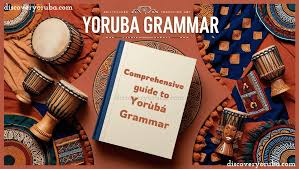11:16 PM Yoruba Pronunciation Tips: Speak With Tone and Confidence |

Learning vocabulary is one thing—saying it correctly is another. Yoruba is a tonal language, meaning how you say a word directly affects its meaning. Mastering pronunciation early will help you avoid misunderstandings and gain respect as a speaker. In this guide, we’ll walk you through practical Yoruba pronunciation tips that accelerate fluency and boost your confidence. Why Pronunciation Matters in YorubaTone is not decoration—it’s definition. For example:
Failing to use the correct tone means saying something completely different than you intended. That’s why Yoruba pronunciation tips are non-negotiable for clear, respectful communication. Understand the Three Tones of Yoruba
Example with the word “ba”:
Use online Yoruba apps with native audio to practice distinguishing tones. Practical Tips for Mastering Pronunciation🔹 1. Slow DownTonal clarity requires deliberate speaking. Avoid rushing through syllables. This gives you time to match pitch and syllable. 🔹 2. Use Native Audio SourcesApps like NKENNE and Yoruba101 feature native speakers. Imitate tone, cadence, and stress by repeating after them daily. 🔹 3. Record YourselfHearing your own voice helps reveal tone mistakes. Record 5–10 Yoruba words daily and compare to native examples. 🔹 4. Practice with MusicListening to Yoruba music and culture sharpens your ear. Songs slow down syllables and exaggerate tonal highs and lows for effect. Common Pronunciation Mistakes (and How to Fix Them)
Learn Yoruba Language With Tone in MindIf you're trying to learn Yoruba language fluently, pronunciation must be central to your method. Start with:
Integrate Grammar and Vocabulary With SoundDon’t separate sound from meaning. As you practice Yoruba grammar basics and build your Yoruba vocabulary, say every word aloud with tone. Example:
Use Yoruba Language Courses for Guided CorrectionEnrolling in structured Yoruba language courses often includes speaking labs, instructor feedback, and tone drills. These are perfect for polishing your delivery and gaining immediate correction. Final ThoughtsYou don’t have to be a native speaker to pronounce Yoruba beautifully. But you do need patience, practice, and the right guidance. Start with short daily listening and speaking drills. Record. Repeat. Refine. With these Yoruba pronunciation tips, you’ll transform your Yoruba from robotic to resonant—tone by tone, word by word. |
|
|
| Total comments: 0 | |